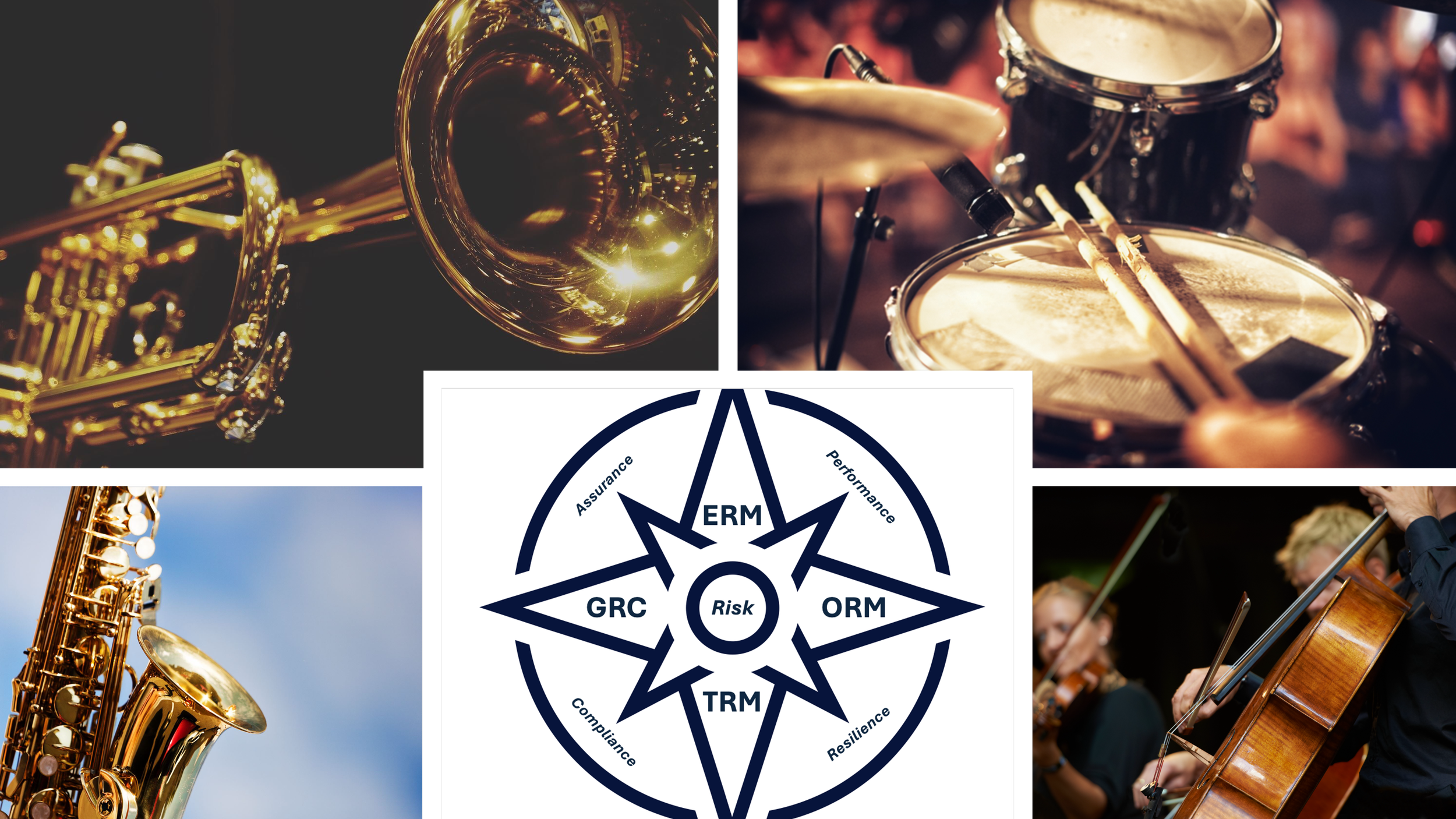The Maestro of IRM: Conducting the Masterpiece of Modern Risk Management
In the intricate world of risk management, where every decision plays a crucial part in the overall performance of a business, envisioning the integrated approach of governance, risk, and compliance (GRC) alongside Technology Risk Management (TRM), Operational Risk Management (ORM), and Enterprise Risk Management (ERM) as a symphony orchestra offers a compelling narrative. This analogy, inspired by Michael Rasmussen’s insightful blog post on “Next Generation GRC: Business Integrated/Aligned GRC,” showcases the pivotal role of Integrated Risk Management (IRM) — not just as a component, but as the conductor uniting these critical elements into a harmonious ensemble. Just as Michael styles himself as the GRC Pundit and Father of GRC, I’ll extend his analogy by lightheartedly accepting the complementary role of the Maestro of IRM, conducting the masterpiece of modern risk management.
Every Organization's Need for an IRM Conductor
Just as I embrace the role of Maestro of IRM in this narrative, every organization needs to have its own IRM conductor, orchestrating the myriad elements of risk management to create harmony and alignment with business objectives. This IRM conductor is pivotal in ensuring the different sections of the risk management orchestra - GRC, TRM, ORM, and ERM - play together in sync, turning individual efforts into a cohesive performance.
The IRM conductor might take on various executive roles depending on the organization's size, complexity, and industry. For some, the Chief Risk Officer (CRO) is best suited to wield the conductor's baton, given their broad oversight of risk management practices. In others, the Chief Legal Officer (CLO) may take up the role, especially in industries where regulatory compliance plays a central theme in risk management. In some cases, particularly in smaller organizations or those emphasizing a top-down approach to governance and risk, the Chief Executive Officer (CEO) might act as the IRM conductor, leading from the front to integrate risk management with strategic business planning.
The Ensemble of Risk Management
As Michael shares in his latest blog post, within our grand orchestral analogy, the various domains of risk management assume critical roles:
GRC, the Percussion: Establishing the fundamental rhythm of governance and compliance, setting the pace for the organization's operations.
TRM, the Brass: Signaling the challenges and innovations of the digital landscape, keeping the ensemble attuned to cyber risks with the power of brass fanfares.
ORM, the Strings: Weaving the day-to-day operational risks into the melody, adding depth and resilience with the strings' graceful performance.
ERM, the Woodwinds: Carrying the strategic narratives across the ensemble, the winds section of ERM ensures the organization's strategy is adaptable and responsive to enterprise-wide risks.
Orchestrating a Harmonious Performance
The IRM conductor's vision guides the integration and flow of these diverse yet interconnected risk management domains. By interpreting the complex score of business objectives and strategies, the conductor ensures that the organization's risk management efforts are aligned and enhance its overarching goals. The symphony of risk management is an ongoing concert characterized by performance, resilience, assurance, and compliance. The IRM conductor's role, whether the CRO, CLO, CEO, or another executive, is crucial in ensuring that governance structures, technological advancements, operational processes, and strategic risks harmonize to support the organization's objectives.
Encore! A Unified Strategy for Success
By championing a harmonious approach, the IRM conductor transforms risks into opportunities and challenges into victories. This narrative underscores the importance of having a dedicated IRM conductor to lead the diverse elements of GRC, TRM, ORM, and ERM in concert, ensuring that every note contributes to the grand symphony of organizational success.
While I may jest about being the Maestro of IRM, the essence of the role is clear and critical. Every organization must find its IRM conductor, an executive capable of integrating and leading its risk management efforts to achieve strategic resilience and success. This leadership, embracing the baton with confidence and vision, ensures the harmony and effectiveness of the organization's risk management symphony.

